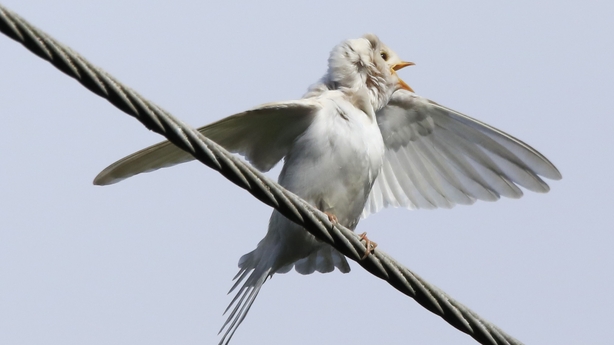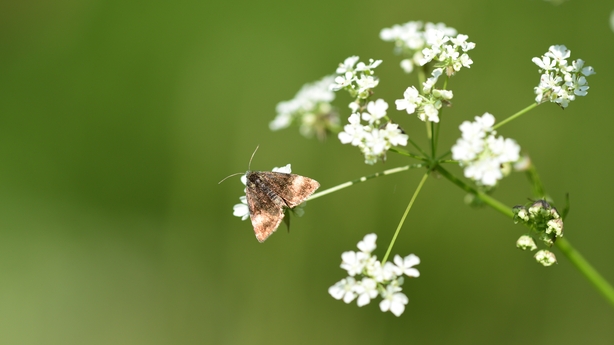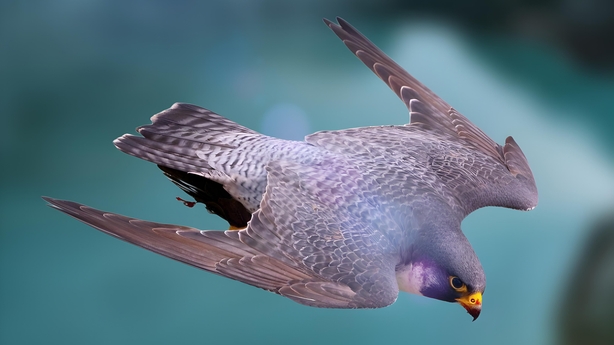To listen to RTÉ.ie's radio and podcast services, you will need to disable any ad blocking extensions or whitelist this site.

0
00:00
00:00
Episode Notes
Panel: Eric Dempsey & Niall Hatch
In addition to listening to us on RTÉ Radio One at 22:00 every Monday night, don't forget that you can also listen back to each of our programmes any time you like at https://rte.ie/mooney. There, you will find an extensive archive of past broadcasts, conveniently split into different topics and segments.
Tonight’s programme features a fascinating discussion about plumage colouration in one of Ireland’s best-loved bird species, the Swallow. With that in mind, our recommendation from the Mooney Goes Wild archives this week is a special documentary all about these remarkable long-distance migrants called The Swallow: From Egg to Africa. Presented by Eric Dempsey, it was first broadcast in 2004 and then updated in 2017 to incorporate the latest information about Ireland’s Swallow populations. So, if you have ever wanted to know more about these truly amazing world travellers, now you can!
To listen to this documentary from the Mooney Goes Wild archives, visit https://rte.ie/radio/radio1/clips/21235002/
White Swallows in West Cork

One of our good friends here at Mooney Goes Wild, Prof. John O’Halloran, President of University College Cork, was in touch with Derek during the week to let him know that a lovely lady of his acquaintance called Margaret has a most unusual house-guest staying with her: a completely white-feathered Swallow! What’s more, this is not the first time: back in 2021 she had not one but two juvenile white Swallows in the same nest.
On tonight’s programme, Margaret joins us on the phone from her home in West Cork to tell us all about these beautiful little birds. Our panellists discuss the reasons behind abnormal feather colouration in birds and get to the bottom of whether or not these Swallows are albino or leucistic individuals: the former completely lack all pigmentation, including in their eyes, while the latter are missing some but not all of their species’ normal pigmentation.
For more information about Swallows, visit https://birdwatchireland.ie/birds/swallow/
For more information about albinism and leucism in birds, visit https://bto.org/our-science/projects/gbw/gardens-wildlife/garden-birds/behaviour/plumage/leucism
The mystery of the missing moth

The biological order of insects known as Lepidoptera can be divided into two basic categories: butterflies and moths. Butterflies are undoubtedly better known to the general public than moths, but did you know that, while Ireland hosts just 35 species of the former, it is home to around 1,500 species of the latter?
Of those 1,500 Irish moth species, there is one in particular that has long been sought after by entomologists: the beautiful White Prominent. This striking insect was first discovered in Ireland in the 1850s at a single site in Co. Kerry, but nowhere else on this island. Across the water in Britain, there were a handful of records in the 1860s, but none since. Otherwise, the White Prominent occurs in northern and central Europe all the way east to Japan, which led some experts to view the Kerry records with suspicion: could they have been fraudulent?
There then followed another few records in the late 1800s, again from Co. Kerry, with some more in the early 1900s. The last report was in 1938, then the trail went cold: the species disappeared and was never heard of again. If they had ever really existed, then they were now extinct as a Irish species . . . until moth expert Dave Allen and his team of researchers delved into the history of the old records and, in 2008, rediscovered the White Prominent in Co. Kerry, after an absence of 70 years. It must have been there all along, and the old 19th century records had been true.
The mystery of the missing moth has long intrigued our own Eric Dempsey; so much so, in fact, that he is currently hard at work on a special Mooney Goes Wild documentary about the loss and rediscovery of this insect, to be broadcast on RTÉ Radio One at Christmas time as part of the Nature on One series.
On tonight’s programme, Eric gives us a teaser of what to expect from his documentary and sheds some light on how one of the most enduring mysteries in Irish natural history was finally solved, as well as the appeal to naturalists of moths as a group.
For more information about the rediscovery of the 'extinct’ White Prominent moth in Co. Kerry, visit
https://irishexaminer.com/news/arid-30860178.html
Can birds regrow missing feathers?

While out and about during the week, Derek happened to bump into a gentleman called Ken who walks regularly in Dublin’s Herbert Park. He likes to feed the park’s Magpies, and recently noticed that one particularly aggressive individual had attacked one of his or her flock-mates, pulling out all of its tail feathers. He wanted to ask our panel whether or not these would eventually grow back.
As Niall and Eric discuss on tonight’s programme, losing feathers is generally not a particularly big deal for birds. In fact, as part of a natural process of regeneration, all birds replace and regrow all of their feathers at least once a year, usually right after the breeding season. If a bird happens to lose feathers for another reason, as seems to be the case here, provided that the feather follicles themselves remain undamaged, the missing feathers usually grow back in the space of just a few weeks.
For more information about Magpies, visit https://birdwatchireland.ie/birds/magpie/
To listen back to our special Mooney Goes Wild documentary about Magpies, presented by Terry Flanagan and first broadcast in April of this year, visit
https://rte.ie/radio/podcasts/22387077-the-magpie/
Keeping tabs on the world’s fastest creature . . . in Cobh

The Peregrine Falcon is a truly impressive bird, capable of reaching speeds of up to 389 km/h when diving through the air in pursuit of prey: this means that it can travel faster than any other creature on Earth. It is also one of the most widespread animals in the world, occurring on all continents, bar Antarctica.
Before we humans came on the scene, Peregrine Falcons habitually nested on cliff ledges, as most of them still do. However, some pairs instead now favour ledges on tall urban buildings, with church spires being particularly attractive.
This is the case at St. Colman’s Cathedral in Cobh, Co. Cork, which was completed in 1919 and boasts the tallest steeple in all of Ireland, clocking in at an impressive 300 feet, or 91.4 metres. This makes a perfect, secure nesting site and vantage point for Peregrine Falcons, a pair of which are currently nesting there.
On tonight’s programme, local resident and longstanding Mooney Goes Wild contributor Jim Wilson speaks to two men who have been monitoring the St. Colman falcons, Allan Farrell of BirdWatch Ireland’s Cork Branch and UCC graduate and BirdWatch Ireland raptor expert, Dr. Alan McCarthy. The three discuss the history and fortunes of the nesting falcons, the natural history of the species and the challenges that come with monitoring the birds at such a lofty location.
They also share some very interesting information about the cathedral itself and some of the history of the town. Did you know, for example, that Jim’s father once photographed comedy legends Laurel and Hardy there?
For more information about Peregrine Falcons, visit
https://birdwatchireland.ie/birds/peregrine-falcon/
For more information about St. Colman’s Cathedral in Cobh, visit
